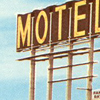“Wherever your travels take you, you will never find the girl who smiles out at you from the travel brochure” – Anonymous
The tourism industry is a highly competitive arena, as almost every country, province and city, seems intent on sustaining or bettering its economy with tourist dollars. In Western Canada thousands depend on the travel and tourist business, including the transportation, accommodation, food and beverage, entertainment and recreation industries. Advertising is vital to the tourism industry. Decisions about recreational travel appear to be made more with the hope of fulfilling emotional or psychological needs than from purely rational considerations. They are thus greatly influenced by emotionally driven campaigns. Tourist destinations now brand themselves like other high end products, with slogans emphasizing their uniqueness.
The majority of prairie tourist visits are made by people from within the same or adjacent provinces. Tourists from a greater distance, though less numerous, are especially prized by the industry since they spend significantly more per day on their visits. Americans have traditionally comprised over three quarters of foreign visitors to Canada.![Cafe Royal, Alexandra Hotel, Winnipeg, Canada. [before 1912].](tourism/images/25169-small.jpg)
The beginnings of organized tourism in Western Canada is closely associated with the Canadian Pacific Railway. The CPR’s railway and steamship services and the chain of high end hotels it established along its routes, attracted many affluent travelers from Central Canada, the U.S.A. and Britain. During the first half of the 20th century the CPR was the leading private player in the promotion of Canadian tourism, producing hundreds of posters and pamphlets to “capitalize the scenery." The most celebrated jewel in the CPR’s crown was the Banff Springs Hotel, in Banff National Park (founded 1887). ![Jasper National Park, Alberta. [193-?].](tourism/images/25181-small.jpg)
Other western mountain reserves – Yoho, Kootenay, Glacier, Mount Revelstoke, and Waterton Lakes – were soon designated as parks and became important venues for outdoor recreation. Prince Albert and Riding Mountain National Parks were established in established in Saskatchewan in 1927 and in Manitoba in 1929. 
Bad roads hampered the development of tourism on the prairies until the Trans-Canada Highway opened in July 1962. The Trans-Canada permitted Canadians to drive coast to coast, mostly over paved roads. Travel by car or van opened new areas for exploration and expanded the size and the diversity of the traveling population. Motels and campsites popped up across the West to meet the increased demand for services.
Although the promise of wholesome outdoor experiences continues to be prominent in Prairie tourist promotion, there is presently a much increased emphasis on the vacation opportunities to be found in the major cities. Travel guides now give much more space to the touting of urban shopping centres, museums and theaters, entertainment festivals, casinos and commercial nightlife. 
Resort camps in northern and rural areas still eagerly seek hunters and fishers. Operators in these areas are now also seeking out ecotourists and travelers eager to experience the culture of Indigenous peoples, or to have a ‘real’ taste of farm or ranch life. Canadian tourism agencies particularly wish to increase lucrative foreign tourism and attract more visitors from the Asia-Pacific, Europe and Mexico. Some eyes were raised in 2007 when Tourism Calgary announced its intention to promote the city as a gay friendly getaway destination to grab a slice of what it described as a 7 billion dollar travel market.
|






